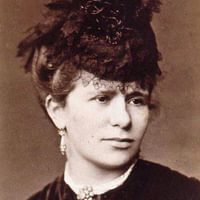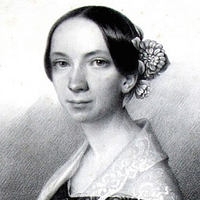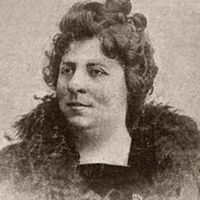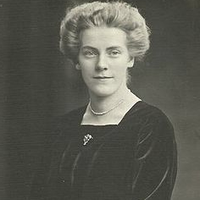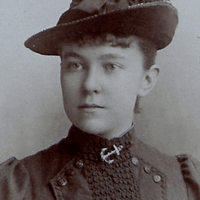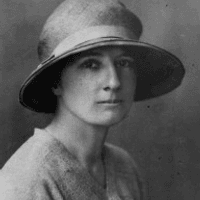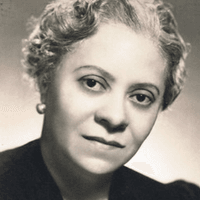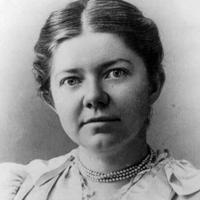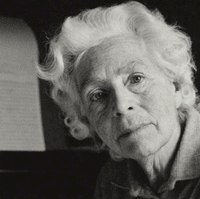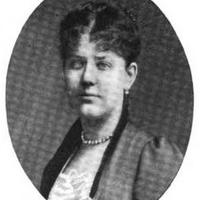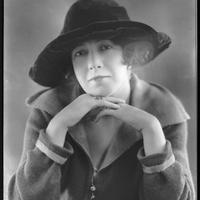Liza Lehmann
Composer
Biography
Elisabetha ‘Liza’ Lehmann (1862-1918) was born into a middle-class English family in 1862. She began her career as a singer, performing her debut at an 1885 ‘Monday Pops’ concert in St James’s Hall. Inspired by her studies in Germany with Clara Schumann and driven by her passion for ‘genuine’ art-song rather than Victorian ballads, Lehmann retired from singing in 1894 and turned to composition. She produced more than 350 solo and ensemble songs, many of which were well-received and widely circulated, aided by her pre-existing reputation as a singer. She is lauded by scholar Derek Hyde as one of the three ‘most outstanding women song-writers’ of the nineteenth century, alongside Maude Valerie White and Frances Allisten.
Lehmann’s musical interests were rooted in her cosmopolitan upbringing, during which she travelled with her family throughout Europe, including to Italy where she met Verdi and Liszt thanks to her father’s connections as a professional painter. She received her first music lessons from her mother, Amelia Chambers, who was also a composer (known under the initials ‘A. L.’). In Lehmann’s autobiography, The Life of Liza Lehmann by Herself, she gives an informal account of her childhood and early musical career, first as a singer and subsequently, a composer and teacher.
In London, Lehmann studied singing with Alberto Randegger and Jenny Lind. She took composition classes from Hamish MacCunn and studied for short periods in Rome with Niels Raunkilde and Wiesbaden with Wilhelm Freudenberg. Her near ten-year singing career brought her considerable fame in England, and she was best known for performing ‘popular’ or art songs.
In 1894, Lehmann married composer Herbert Bedford and chose to focus entirely on composition and teaching. Many of her early songs set German texts, taking inspiration from Clara Schumann and the German Lieder tradition. However, she was also drawn to compose English art- and parlour-songs; for example, The Daisy Chain (1893), a cycle of twelve poems each by a different author. Light-hearted and often humorous, Lehmann makes few melodic or thematic links throughout the cycle, but demonstrates a broad range of emotions, from wistful passion in ‘Stars’ to the tongue-in-cheek innocence of ‘The Swing’. Lehmann continued in this vein, publishing More Daisies: New Songs of Childhood (1902), Bird Songs (1907) and Nonsense Songs from ‘Alice in Wonderland’ (1908), as well as stand-alone songs such as ‘There are fairies at the bottom of our garden’ (1917). These popular items were central repertoire for her two subsequent US tours, in which she often accompanied her own songs in recitals.
In a Persian Garden (1896) was Lehmann’s most ambitious and highly praised work during her lifetime. Despite initial rejection by publishers on account of its unusual structure (twenty-two sections sung by four voices in a mix of solos and ensembles and linked through rhythmic and thematic transformations) and texts (derived from the Rubaiyat of Omar Khayyam, translated by Engligh poet Edward Fitzgerald), the collection is now considered one of the first English song cycles of significance. It attracted considerable attention in both England and America and was described in 1896 by Sunday Times critic Hermann Klein as ‘quite a revelation… of unsuspected power and variety of expression, of depth of melodic charm and technical resource’. One of the cycle’s most famous songs, the lyrical tenor aria ‘Ah, moon of my delight’, has featured on numerous recordings.
Lehmann’s In Memoriam (1899, Tennyson) is a more traditional song-cycle, with twelve loosely connected texts set for baritone and piano. The original score includes an epilogue with sections for spoken voice; however, this part has seldom been performed. In 1906 Lehmann composed ‘The Golden Threshold: An Indian Song-garland’ for four solo voices (soprano, contralto, tenor, and baritone) with chorus and orchestra, setting poems by Sarojini Naidu, dedicated to the Countess Valda Gleichen; and, in 1909, Four Cautionary Tales and a Moral, setting texts by Hilaire Belloc.
In 1911, Lehmann was elected the first President of the new Society of Women Musicians. In her inaugural address she stressed the importance of song composers receiving singing lessons. This staunch belief underpinned her publication of Practical Hints for Students of Singing in 1913, a textbook on singing which included practical vocal exercises and a selection of songs to support developing vocal technique.
Later in 1913, Lehmann became a professor of singing at the Guildhall School of Music. She continued to compose, producing, for example, ‘Daddy’s Sweetheart’ (191?, Hardin-Burnley) and the harmonically adventurous ‘Magdalen at Michael’s gate’ (1913, Kingsley). She also wrote another characteristically comic song cycle, Parody Pie (1914) with texts by A. Stodart Walker, Nancy Pain, Winifred Rose and others.
One of her most serious and poignant songs of this period was ‘Evensong’ (1916), a setting of a poem by Constance Morgan. Composed just two years before Lehmann’s death in 1918, the text begs comfort from angels, likely referencing a personal tragedy in Lehmann’s life: the premature death of her eighteen-year-old son from pneumonia.
© Rachel Howe, 2022
SCORES
Many scores for Liza Lehman's work are available to view here.
Where can I listen to Liza Lehman's songs?
Listen to 'There are Fairies' here.
'The Lily of a Day'
Song List
This list is likely to be of songs that have been performed at Oxford International Song Festivals and Oxford Song events, and may not be comprehensive of this composer's compositions. This database is ever growing as a work in progress, with further songs regularly being added.
| Evensong (1916) | Liza Lehmann |
| If I built a world for you | Liza Lehmann |
| If no one ever marries me (1900) | Liza Lehmann |
| The Lily of a Day | Liza Lehmann |
| There are Fairies at the Bottom of our Garden | Liza Lehmann |
| When I am dead, my dearest | Liza Lehmann |



